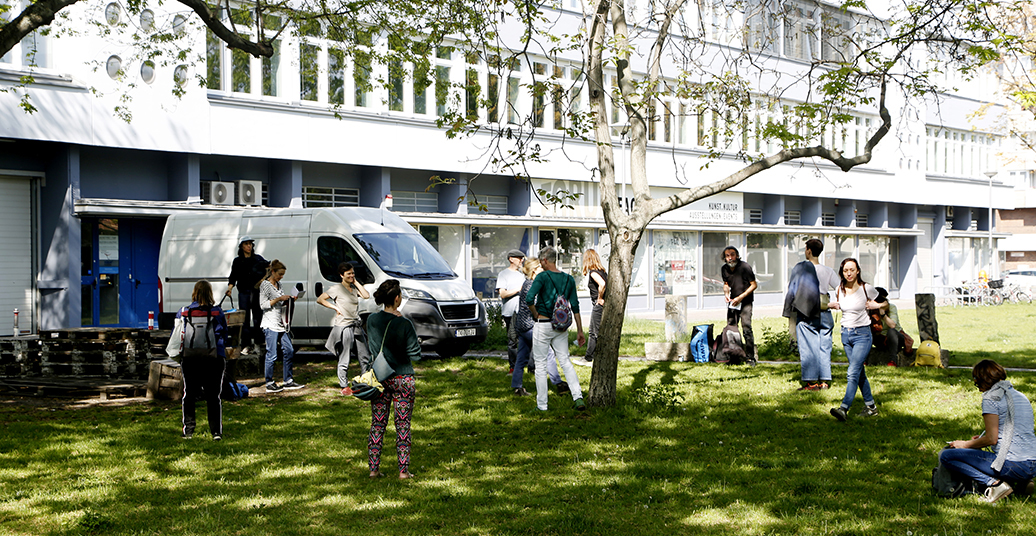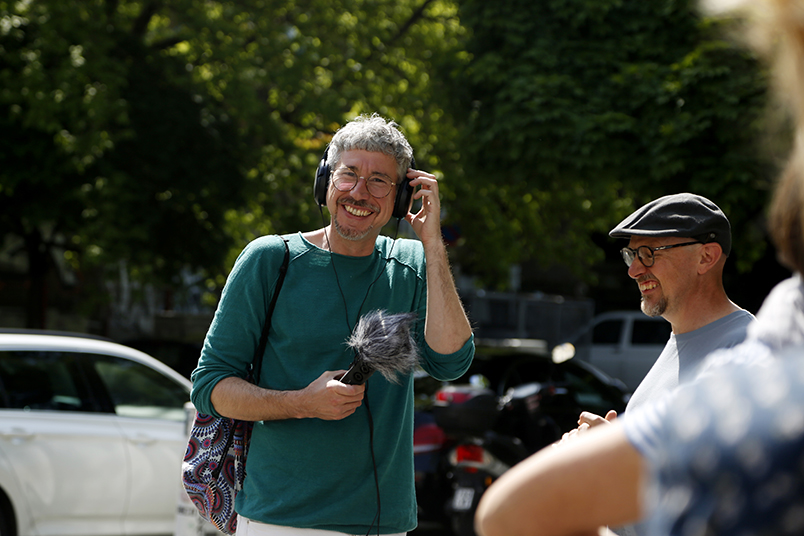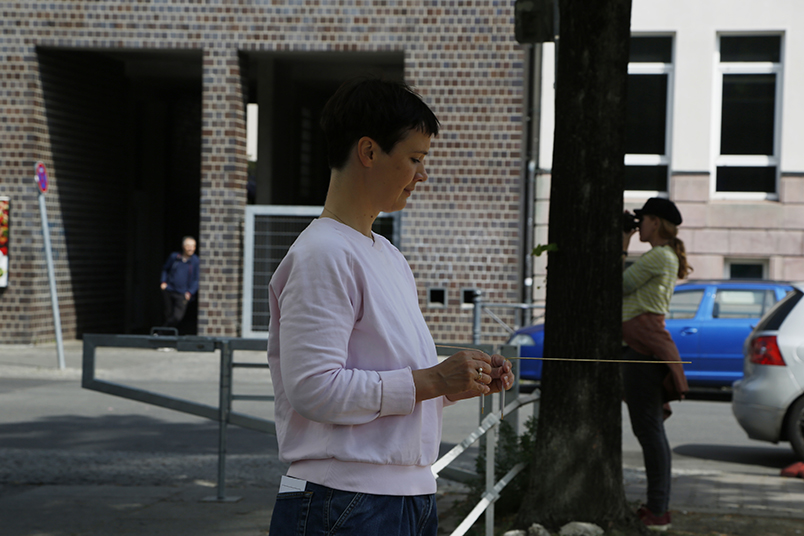After days of being homebound, practice lab EINS from Sabine Zahn’s project “Stadterweitern (City Expansion)” gave me a chance to rediscover my senses (and with them a piece of Berlin). During the first of four five-day labs to take place in different central locations in Berlin from May to November 2020, I had the opportunity to experience Ernst-Reuter-Platz close up. Lab EINS also included a performance lecture and a discussion.
For quite some time now, the focal point of Sabine Zahn’s practice has been to place instruments from the performing arts into an urban context. What emerges are somatic conversations with the city, which result in new discoveries about urban space in the form of workshops and performances. With the four-part series of the “Stadterweitern” practice lab, Sabine Zahn plugs into her piece from last year, “Fremdgehen (Playing Around)”, participayory duets aimed at discovering the urabn fabric. This new research series is intended to dig deeper into the aspects that surfaced there. Practice lab EINS was headed by performer and mapper Daniel Belasco Rogers and video artist Andrea Keiz. Its aim was to expand our sensorium and rediscover it at especially “disconcerting” locations.
Tuesday morning, Ernst-Reuter-Platz:
I noticed the patch of green in the middle of the rotary a long time ago. But I had never actually set foot on it. It’s not inviting. At first, I have to navigate my way through the labyrinth of underpasses meant to guide me there. I arrive between two enormous beds of purple and orange violets and am handed a slip of paper. It includes a warm-up exercise. And soon I’m standing alone (Covid-distanced style) with my eyes closed in the middle of a high-traffic rotary, the wind on my skin and in my hair. Then I’m given a mysterious instrument, which converts low and high electromagnetic frequencies into noise to sound out my environs.There are seven different types available. Slowly, the device makes the invisible energy surrounding us visible to me. “Is it good, is it bad?”, I try to remain neutral. Over time, I and the others around me get braver and bolder: I discover a street lamp at the edge of the rotary. And the other participants spread across the entire island are also all busy with strange activities. We’ve appropriated the Platz. I talk about our experiences with another participant and leave the place with a beautiful memory of a magical moment encircled by heavy traffic.
Photos: “Stadterweitern” – a project by Sabine Zahn. Practice lab EINS participants in May 2020 © Constanze Flamme
A lecture performance (audio available until 20 May 2020 at http://stadterweitern.de/material), “Im-Gehen-Verstehen (Understanding in Motion)” by movement researcher Katja Münker took place on Wednesday in conjunction with the practice lab. During the lecture, meant to be listened to while walking, Münker discusses the somatic aspects of understanding by means of the Feldenkrais method and improvisation strategies. Understanding isn’t linear, and Münker asks herself how “somatic practices can support a multifaceted, actively designed form of understanding and what sociopolitical significance this could have.” Feldenkrais demands bodily perception whereas improvisation strategies help navigate relationships. This can give rise to playful interstices and awaken intersubectivity. On Saturday, following a physical practice (without external tools), there was a discussion with cultural scientist and architectural theorist Dr. Martin Peschken during which participants attempted to put their own experiences into words. The exchange was lively since many of those present were involved in the project or tackling similar questions.
I am constantly reminded how dance and the performing arts in general are about knowledge, but another type of knowledge. In the A.PART-Festivals 2020 blog, preference is given to research over the finished product (which emphasizes that the road is more important than the destination). In the “Stadterweitern” practice lab, the “know-how” (the practice) is linked to the “know-about” (the science). [1] The instruments of scientific methodology (though not exclusively scientific ones as the divining rod can hardly be classified as such) like the camera, video, microphone, and electromagnetic reader are literally ‘hacked’ in order to alter our perception to attain an enhanced experience of the city. This other type of knowledge gifted to us by the arts should be given more space and value.
Find out more about “Stadterweitern” at: http://stadterweitern.de/about
[1] Pakes, Anna (2009) “Knowing through dance-making: Choreography, practical knowledge and practice as research” in Buttherworth, J. & Wildschut, L. (eds.) 2009 Contemporary Choreography: A Critical Reader. London: Routledge.
English translation by Melissa Maldonado






